MusicRadar Verdict
An outstanding combination of sonic elements that combine to create a great instrument.
Pros
- +
Great sounds. Excellent feel. Focussed design.
Cons
- -
Artefact created when patch switching.
MusicRadar's got your back

Clavia Nord Stage
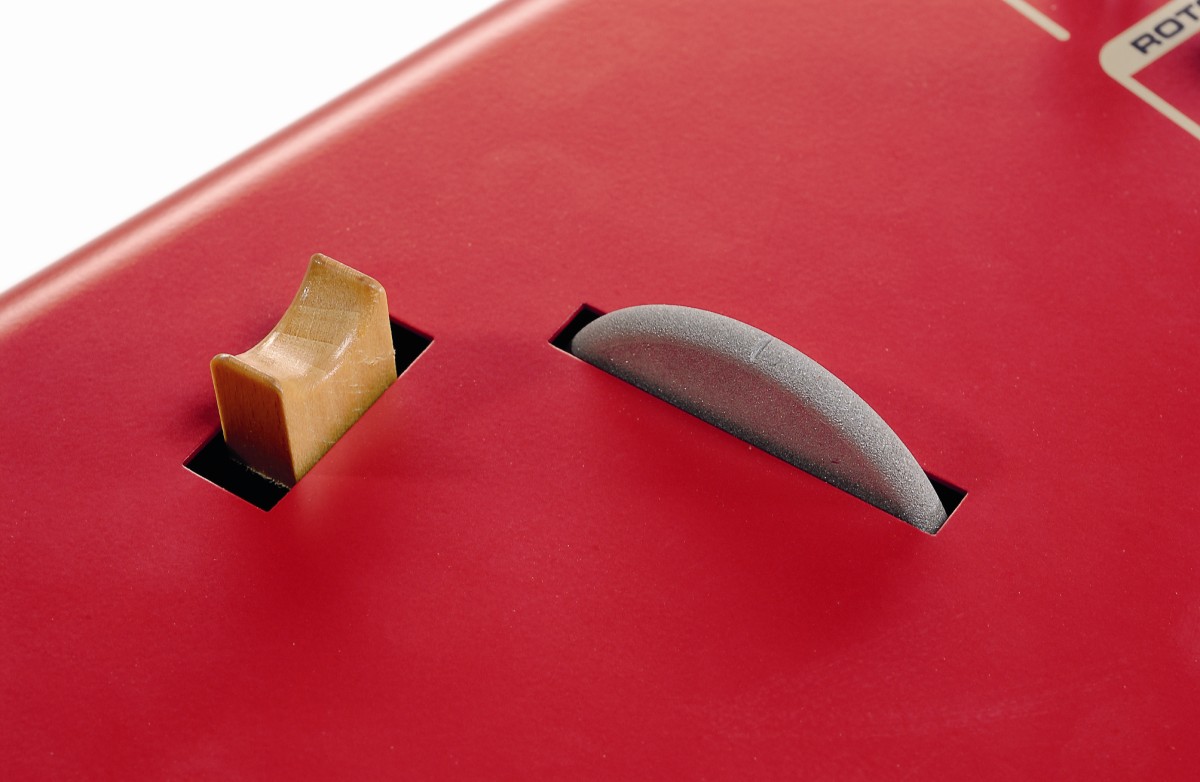
Clavia Nord Stage
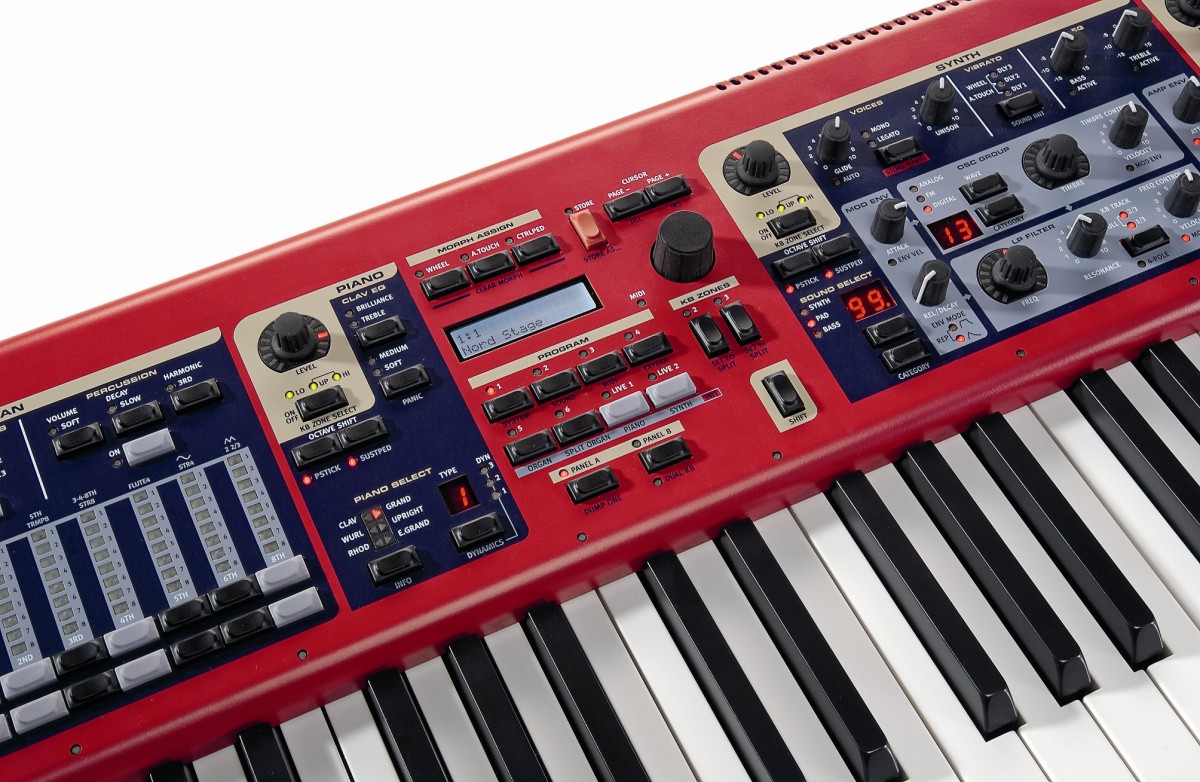
Clavia Nord Stage
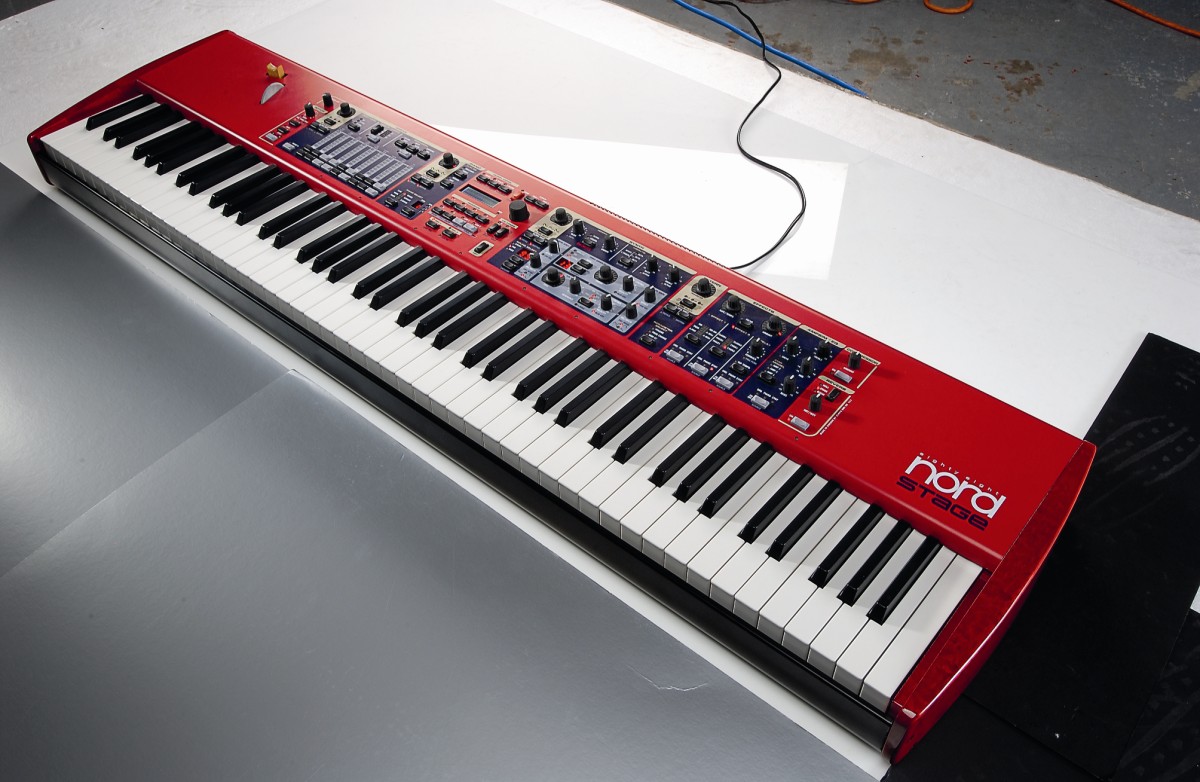
Clavia Nord Stage
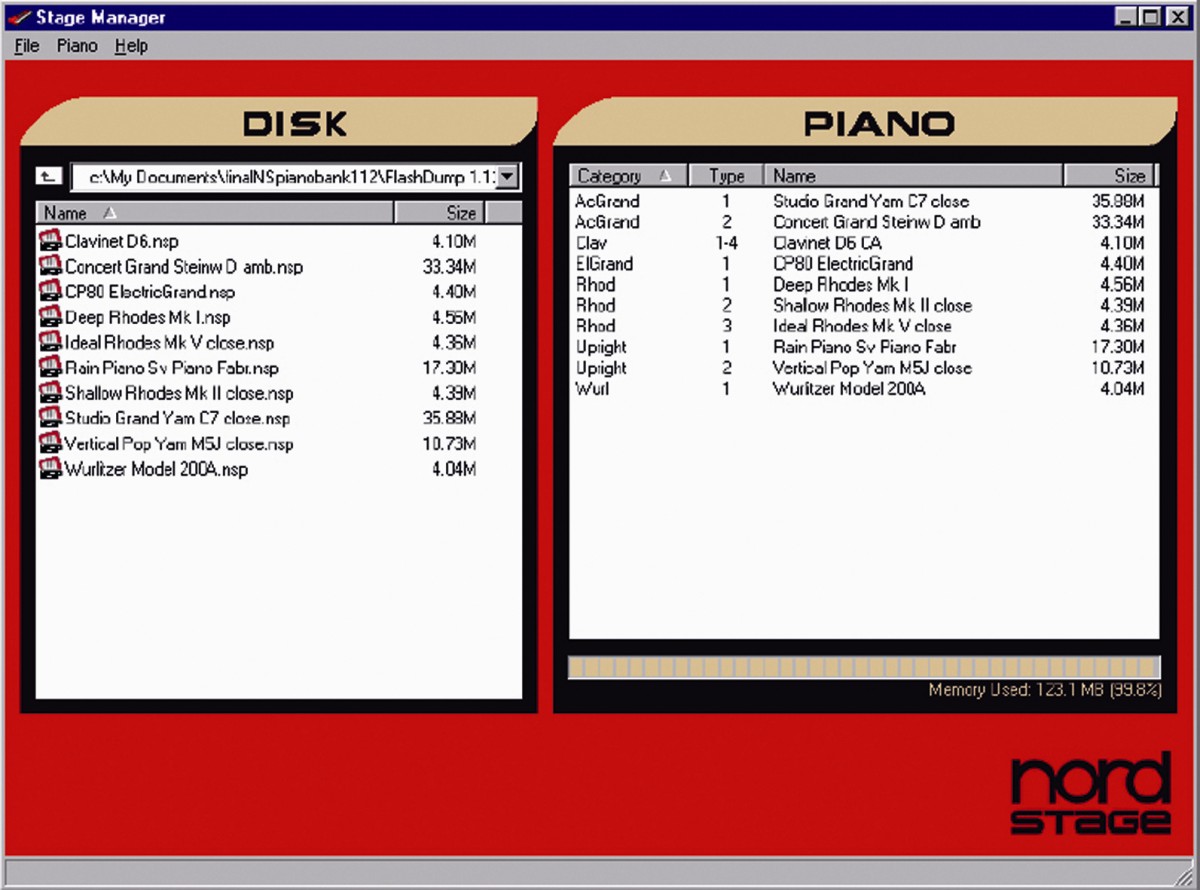
Clavia Nord Stage
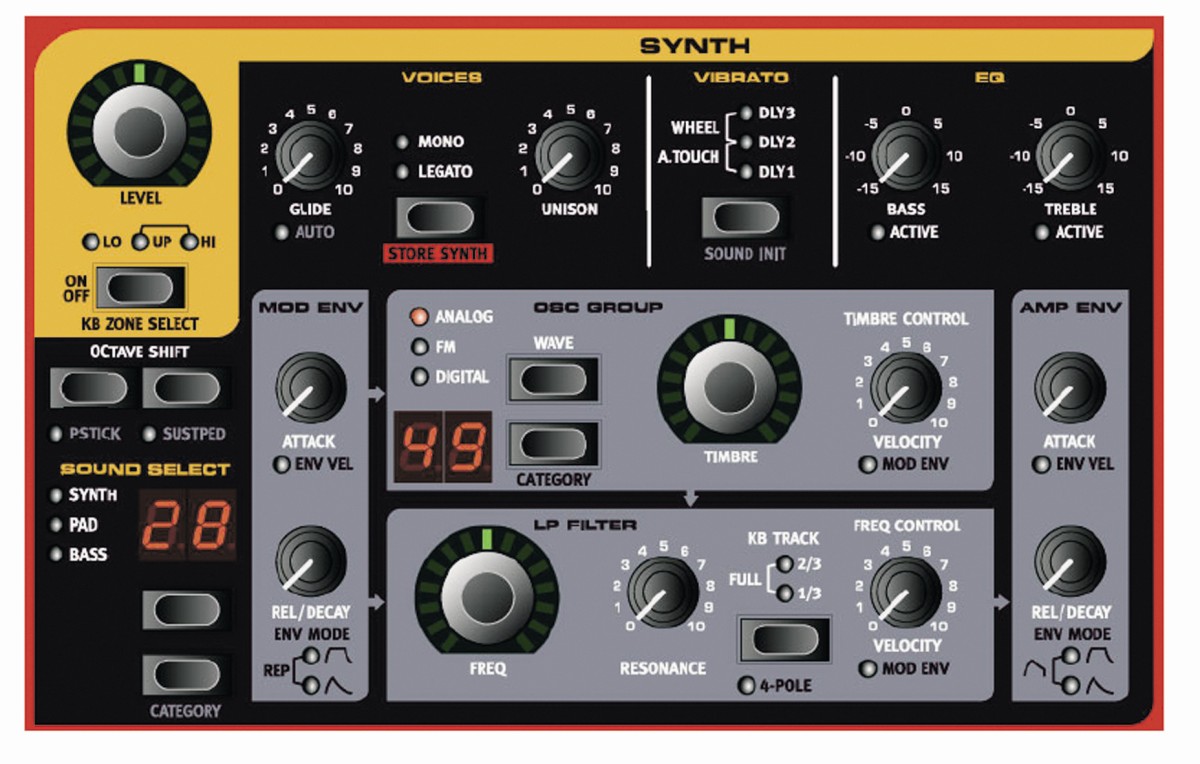
Clavia Nord Stage

Clavia Nord Stage
The last 20 years have seen some pretty staggering evolutionary spurts in the keyboard section of your local music shop: The Roland D50, the Yamaha DX7, the Korg M1, MIDI and perhaps most notably the sampler.
If you're the type of synthusiast that couldn't wait to play these instruments every weekend in the utterly transparent guise of 'seriously thinking of buying it', then you were, and probably still are, a victim of the following disorder: desire motivated perceptual involuntary auto-enhancement. DMPIA.
For example, we thought the baritone sax sound on the Korg M1 was amazing. It clearly wasn't. Either we'd never really listened to a baritone saxophone, or we never really listened to the M1 sound.
We wanted the sound to be amazing, we wanted to be able to create utterly real saxophone performances. We needed it to be brilliant, so when we played 'Careless Whisper', our brains filled
in the blanks.
Nowadays we use actual recordings of real instruments as the basis of keyboard emulation and how convincing the sounds are is down to how the samples and controllers have been orchestrated.
Kurzweil and Yamaha both have a good reputation for passable piano imitations and now Clavia have entered the fray with the Nord Stage - an 88-key, hammer-action monster.
It's been conceived to do a few things very well, most notably the imitation of some classic keyboard instruments. So let's take off our rose-filtered headphones and have a proper listen.
Hands on
Weighing in at 18.5Kg - considerably less than two grand pianos, two upright pianos, two electric pianos, an electric grand, three organs two synths and a Clavinet - the Stage is an impressive looking instrument presented in Clavia's trademark red.
The keyboard is weighted with a medium hammer-action while the traditional Nord series grey controller wheel and little wooden pitch-bender appear to the left of an un-cluttered looking control panel.
Instrumentally there are three sections in total: The piano section offers ambient miked Steinway Concert Model D and close miked Yamaha C7 grands, Svenska Pianofabriken (Swedish) and Yamaha uprights, a Yamaha CP-80 Electric Grand, Mk I, II and V Rhodes, a Wurlitzer 200A and a Hohner Clavinet D6.
The organ section offers a Hammond B3, a V-Type Vox Continental II and also a Farfisa Compact Deluxe. Synth-wise we have a simple subtractive synth with elements of FM and Wavetable synthesis available to broaden the palette.
There's an External section that deals with playing other MIDI instruments, a Morph feature (particularly useful with the aftertouch) for applying multiple parameter changes to sounds, full layer and split controls and a simple but effective effect section, including compression and amp simulation.
Lastly - you get two! Panels A and B are independent and identical in capability, so if you want you can play two pianos, two organs and two synths, each with their own effects simultaneously.
In use
At first we misunderstood the Nord. The manufacturers blurb said something to the effect that the Stage was the ultimate live keyboard.
So naturally, we assumed it would also have loads of MIDI outputs, pedals and controllers, which would enable it to sit in the middle of a complex live set-up and run the whole show.
We also thought that it would have loads of sounds in it to remove the need for extra modules and keyboards in a live rig - otherwise what do you get for the best part of two grand?
But, as the manual correctly points out: the best tool isn't a Swiss army knife and there are no bells and whistles here.
The Stage simply sets out to be a highly playable and expressive instrument that contains the few essential sounds and effects that will never go out of style and will be the next best thing to having genuine instruments at hand.
The genius stroke is providing the synth and effects. These enable you to take the classic sounds and colour them in the way you want to make them work in many different contexts.
It's a one-stop shop, because the EQ, amp simulation and compression are exactly the tools needed to sit these great fat sounds into a busy mix.
Alternatively, it needs to sound pretty good as a solo instrument. The moment most big workstation keyboards try and be a real piano is usually the moment when they fall over, so what makes the Stage any better than them?
Up close
The control panel is divided into seven distinct sections. First, on the far left, is the Master Level/Rotor Section.
It's the master volume control for headphones and the Stage's four outputs which can be assigned in the system menu. Outs three and four can be another stereo pair or two separate monos.
The rotary speaker controls are placed here to be near the organ section, but actually appear in the signal path after the effects section.
This ensures that dual-manual organs you might create (using the Panel A and B function) share the same Leslie, and also that final level alterations will drive the effect and create distortion in a realistic way.
The rotary effect can be applied to all of the instruments, has a stop/start and fast/slow button, and can have its attributes changed with morph or aftertouch control.
Next up is the organ section, dominated by its nine 'virtual' drawbars. If you're going to make a realistic instrument you might as well have real drawbars - right?
The obvious advantage is that recall positions are instantly visible, but so much about Hammond playing is about physically grappling with the thing.
Motorized drawbars would be expensive and fragile, given the pummeling they would undoubtedly endure. It doesn't take long to get used to the button controllers to be fair, but it ain't like the real thing.
Much has gone into this emulation, though. The chorus and vibrato effects and variable key click all contribute to its convincing tone.
All in all it's very good - it certainly has some balls and would stand up to scrutiny, especially in a mix, but if you've ever had the pleasure of miking up a huge Leslie in a beautiful room and listening to the snarling boil of a rocking Hammond being tamed by someone who really knows what they're doing, something like the Nord will never fully do it for you.
Pianos
The Pianos really deliver. They've obviously been multi-sampled to a high resolution and there's a pile of headroom, so the intensity of the sound matches the effort you put into the keyboard.
This is no mean feat and one of the things that ultimately make this a playable and addictive instrument. The ambience of the Steinway is equally as atmospheric and as a result is as inspiring as the slightly wonky Swedish Upright.
It's possible to alter the dynamic response of the pianos so you can play a loud part repeatedly without wearing yourself out and the Clavinet variations available accurately ape the real thing.
In fact, all the electric pianos have a startling depth and realism that makes them really playable. That for us, is what the Stage is all about.
Conclusion
There are hidden depths to what seems on the surface to be a very simple instrument. The synth and effect sections are invaluable for colouring the sound and are very intuitive to use - tap tempo and amp simulation being the things we fiddled with most.
The possibilities for layering and morphing using aftertouch could keep you amused for weeks, and the simple compressor works very musically.
It's the simplicity of the Stage that makes it seem like a vast lungful of fresh air when you put it alongside the monster Kurzweil and Korg workstation-type things.
Our only grumble was an audible artefact created when changing patches that was seemingly routed through the delay effect, but with the USB update being so straightforward we're sure updates will come thick and fast.
With soft-synthesis and sampling being what it is, we'd happily chuck out all the digital keyboards our studio and replace them with the Nord Stage.
It really is the next best thing to having a piano next to you. It's expensive, but like any good instrument, it almost plays you.
Future Music is the number one magazine for today's producers. Packed with technique and technology we'll help you make great new music. All-access artist interviews, in-depth gear reviews, essential production tutorials and much more. Every marvellous monthly edition features reliable reviews of the latest and greatest hardware and software technology and techniques, unparalleled advice, in-depth interviews, sensational free samples and so much more to improve the experience and outcome of your music-making.
“We were arguing a lot and we were miserable”: How Green Day exceeded expectations with their most ambitious song
"There’s plenty for us guitarists to learn – and ‘less is more’ is the overriding lesson": how to play like George Harrison on The Beatles' Abbey Road
“They didn’t like Prince’s bikini underwear”: Prince’s support sets for the The Rolling Stones in 1981 are remembered as disastrous, but guitarist Dez Dickerson says that the the crowd reaction wasn’t as bad as people think










